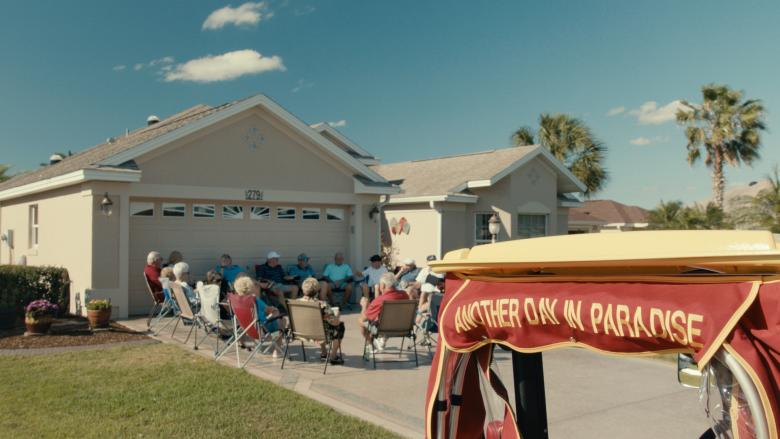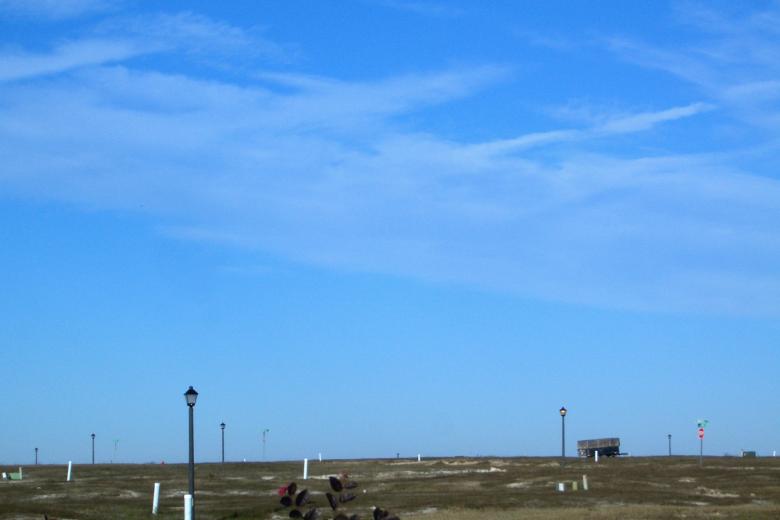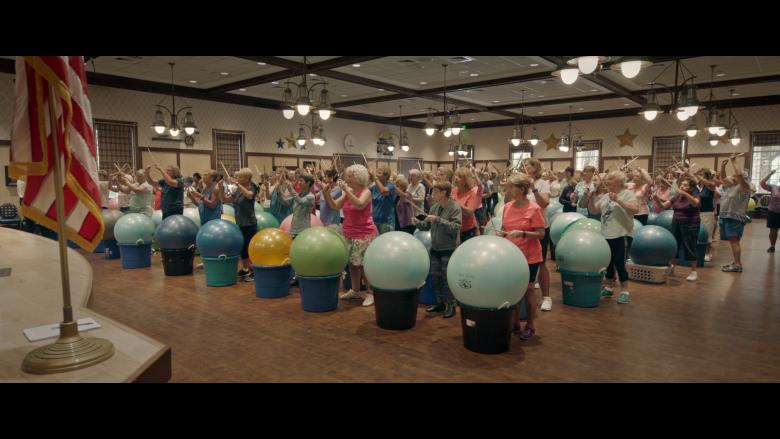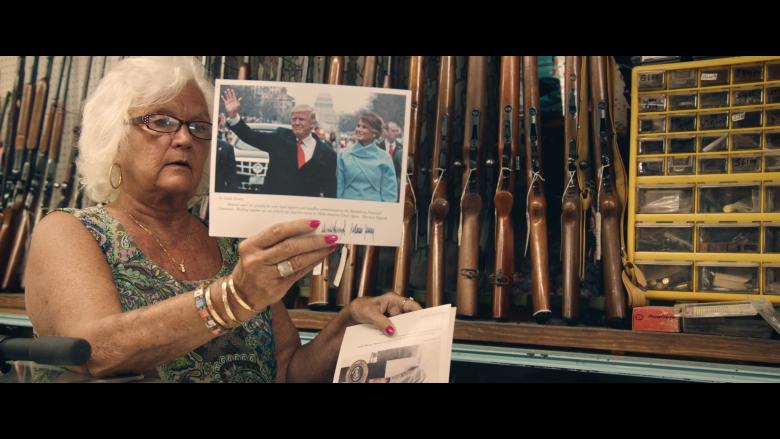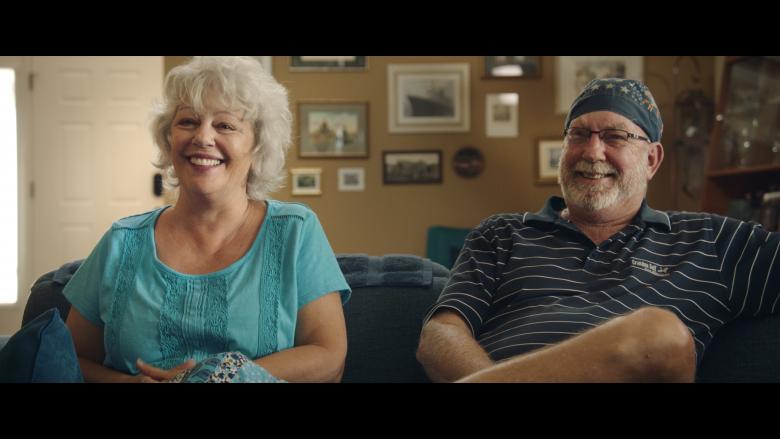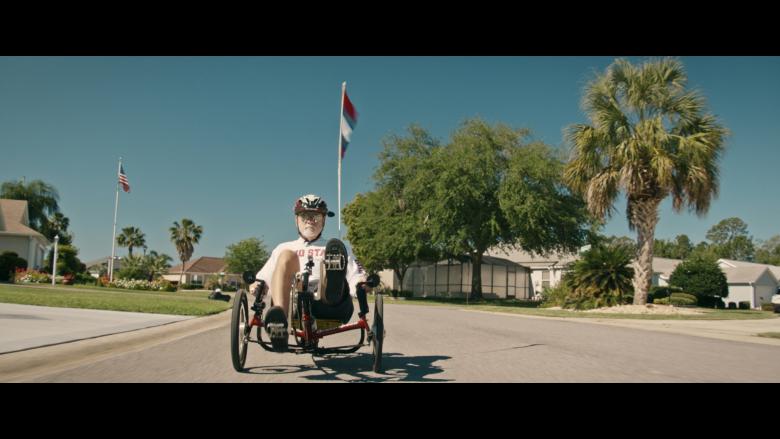'But It's a Nice Bubble'
John Hill
14. juin 2022
Photo courtesy of Deckert Distribution
The Bubble, a documentary by Austrian filmmaker Valerie Blankenbyl, was the big winner at the BARQ Festival in May, winning Best Documentary Feature Film. World-Architects editor John Hill watched the film recently, sharing some personal insight on the film's subject.
My first visit to The Villages, the large retirement community one hour north of Orlando, was also my first time setting foot in Florida. My initial impressions, beyond the airport in Orlando where the driver picked me up, were formed by the small town of Wildwood, whose Main Street was the exit we took off the turnpike. First an orange stand and gas station, then — if memory serves me right — a gun shop, a pawn shop, a church, and other small old buildings intermingling with impressive oak trees draped with Spanish moss: Wildwood did not seem like much of a town (it’s population, I later learned, was not even 7,000) but it felt very “Florida” to me. A right turn off of Wildwood's Main Street eventually delivered me to The Villages and the brand new house of my parents, who had just moved down to the Sunshine State from the Windy City. The oak trees with Spanish moss gave way to palm trees, flowers, immaculate lawns, and golf courses. Similarly, the old buildings gave way to brightly painted strip malls and — once through the gates — winding roads lined with nearly identical houses with hip or gable roofs, siding or stucco painted “greige,” and lampposts cordially announcing the names of the retired couples living inside.
On that first visit, in 2008, my parents lived near what was then the southern edge of The Villages. By 2021, when The Bubble, a documentary portrait of the retirement community billed as “Florida’s Friendliest Hometown,” was released, the southern edge had shifted southward about ten miles. Now my parents, sill in the same house, live in what is roughly the geographical center of The Villages, which these days has around 150,000 full- and part-time residents, all 55 years and older, and, according to a graphic in the early part of The Bubble, an area twice the size of Manhattan. My latest trip to The Villages took place the same year the film was released, but instead of exiting the turnpike in Wildwood, the driver got off further south, near the current southern border of The Villages and — of all places — a Federal Correctional Complex with four prisons housing a total of 6,000 inmates. The Villages is getting so big and growing so quickly that, if left to its own devices, it will soon devour the land currently being used by the Federal Bureau of Prisons.
The Villages expanding in 2008, taken on the author's first visit. (Photo: John Hill/World-Architects)
For a few years The Villages was a novelty to me, with its many gated residential “villages” (the Village of Bonita, the Village of Hemingway, etc.) countered by a few walkable “town centers” with themed, Disney-esque designs that gave the development a (fictional) past, plus a network of paths that enabled getting around by golf cart as easy as by car — but a lot more fun. Add to these things the recreational centers with swimming pools and courts for shuffleboard, bocce ball, and pickleball (no tennis here!), and The Villages came across to me simply as a self-contained community clearly appealing to its residents.
The first critical text I read on the architectural and planning aspects of The Villages was an essay by Deane Simpson in a 2011 issue of the journal Volume with the theme “Aging.” He recounted the community’s origins in a mobile home park in the 1980s and its decade-by-decade growth, with most of it taking place after 2000. Front and center in Simpson’s piece was the marketing of “lifestyle” toward potential residents, a subject he would treat in more depth alongside other topics (its autocratic governance, demographic homogeneity, etc.) a few years later in his book Young-Old: Urban Utopias of an Aging Society.
"The Villages have 54 golf courses, 70 swimming pools, 96 recreational centers and more than 3000 social clubs." (Still from The Bubble courtesy of Deckert Distribution)
In the years since the 2015 publication of Simpson’s book, a lot of national and international attention has been directed at The Villages, some of it because its phenomenal growth turned it into the largest retirement community in the world, but much of it because of Donald Trump. In 2016, Trump received nearly 70% of the vote in the counties where The Villages is located, due in large part to the high voter turnout of the white Republican voters that make up the majority of residents — two Republicans for every Democrat, per some reports. Four years later, with two weeks until the 2020 election, Trump held a rally at The Villages, professing how much he liked the people there and joking that he would sell Mar-a-Lago and move to The Villages, something the crowd greatly appreciated.
Although director Valerie Blankenbyl does not have footage of the Trump rally in The Bubble, her portrait of The Villages is shaped in part by the former president’s impact on the community, which overwhelmingly voted for him in the last two presidential elections but also displayed their allegiance to him through apparel, flags, and golf-cart parades through the town centers. Blankenbyl’s film explores many of the same defining features of The Villages that Simpson wrote about — the place being called “a weird social experiment” is just one shared aspect that comes to mind — but The Bubble does so in a context that has changed noticeably since 2015.
Linda Vernon (Still from The Bubble courtesy of Deckert Distribution)
The Bubble is about retirement, aging, death, and the places where people decide to live out their last decades. The film uses interviews with residents of The Villages to learn about one such place. We meet Toni and Roger, who recently moved to The Villages; part-time residents (or “snowbirds” in Villages parlance) Jeanie and John; Terry, an active 80-year-old resident who’s lived there for 12 years; and Toni, a longtime resident and retired performer who still sings in local bars. “This place will add ten years to your life,” says the first Toni. Terry doesn’t know why he’d go anywhere else. “We know we’re in a bubble,” the second Toni admits, “but it’s a nice bubble.” These residents — and no doubt many others — are happy living in The Villages.
Blankenbyl portrays the other side of life in Central Florida through conversations with Lauren Ritchie, a (now retired) reporter who covered The Villages for the Orlando Sentinel; Linda, a shop owner in a neighboring community whose business mainly caters to “the village people”; Bill, a retired firefighter who is fighting the ongoing expansion of The Villages; and Mae, a bus driver whose family cemetery sits on a narrow easement lined by “greige” houses. Ritchie’s commentary is helpful for understanding the machinations of The Villages, such as how this community development district, as it is defined legally, operates like “a shadow government” and even owns its own newspaper so residents don’t hear any bad press about The Villages. Her reports on water use and sinkholes in the area also portend to widespread, potentially catastrophic events for current and future residents, as their numbers increase and water usage increases alongside them, depleting the Floridian aquifer the community depends on.
Toni and Roger Akers (Still from The Bubble courtesy of Deckert Distribution)
Most interesting to this reviewer is how comments from residents of The Villages and people living nearby seem to come, deep down, from very similar places. More than one Villager in the film says they worked for decades to earn the right to live in a place like The Villages, while those in the surrounding communities say they want to keep their many acres as they are, free of encroachment. Although The Villages is manicured suburbia and the surrounding properties are lush pasture, present in both arguments are self-preservation and the importance of land ownership over other concerns bridging social groups and species. Nevertheless, by the time an anonymous letter by “a local” citing the environmental, economic, and social problems brought about by The Villages is read aloud near the end of the film, viewers will have already made up their minds as to which side they are on.
In the end, how well does The Bubble capture the experience of The Villages? Coming from someone who has visited nearly two-dozen times, Blankenbyl and her crew capably depict the qualities that shape the community, particularly the town centers, social clubs, house-lined cul-de-sacs, and golf-cart culture. Although the film does not have the time to broach certain topics relevant to the way the place looks — the stricter-than-usual restrictive covenants that dictate paint colors on houses but also restrict lawn ornaments and other expressions of individuality, to name just one — the social and physical character of The Villages comes across clearly. Still, one of my favorite scenes in the film is the last, which I won't give away here, but I will say that it shows a part of The Villages I've never encountered; it is an unexpected scene that makes me think even my firsthand impressions of the place are highly incomplete.
Terry Marksberry (Still from The Bubble courtesy of Deckert Distribution)
Written & Directed by Valerie Blankenbyl
Cinematography by Joe Berger
Edited by Nela Märki
Produced by Dario Schoch, Karin C. Berger, Rajko Jazbec, Arash T. Riahi
World Sales: Deckert Distribution GmbH
Funded by BKA, Filmstiftung Zürich, Austrian Film Institute, Film Industry Support Austria, ORF Film/Fernseh-Abkommen, SRG, FISS, FISA, Suissimage, MEDIA Ersatz
